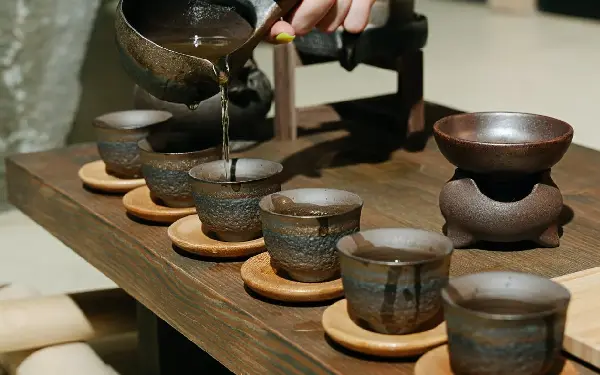Gyokuro and Sencha have distinctive characteristics. Let us explore what makes them unique and beneficial.
The Gyokuro and Sencha variants of Japanese tea are some of the most popular globally. What do these delectable beverages bring to the table? How did they become as popular as they are today?
In trying to describe these fantastic kinds of teas, we discover that Gyokuro and Sencha have several distinctions and similarities.
Let’s find out how these types of teas taste, what benefits they bring, their origin, and their preparation process.
You may want to grab a cup of either of the two after reading about their similarities and differences.
Gyokuro: an innovation in growing tea
Kahei Yamamoto IV is credited for introducing Gyokuro tea to the world. He comes from an esteemed family of tea brewers that trace their exploits back from the 15th century.
In one of Kahei’s trips to the colder regions of Japan, he stayed with a family that served a different-tasting tea.
He learned that this family covered their tea plants to avoid frosting. He took a sample of these leaves and brewed them. He liked the result of this acquired taste and began to sell this type of tea under the name “bead of dew”.
This became known as Gyokuro as time passed by.
Sencha: essence of simmering tea
Generally, sencha, or “simmering tea” tea is the method of steaming the tea leaves for brewing. This was introduced by Baisao, a Japanese Buddhist monk that lived from 1675-1763. He became popular as a tea trader in the Kyoto area.
From a simple school of Zen Buddhism, this monk’s fame exploded after his death when the sencha tea ceremony was institutionalized in wide areas.
This explains that Sencha is a method of tea preparation by steaming tea leaves. Therefore, Gyokuro is also considered a Sencha tea. Their distinction lies in the way their leaves are grown.
Gyokuro and Sencha: distinctive tastes
Due to the covered leaves of Gyokuro tea, it is infused with a certain amino acid called L-theanine. This nutrient gives Gyokuro a meaty or “umami” flavor like that of mushrooms.
The hint of umami taste is combined with a touch of sweetness from the tea leaves. It has a certain level of bitter after taste that complements its rich texture.
Meanwhile, Sencha tea is known for its herbal flavor. It exudes a grassy taste that leaves a strong aroma. Tea drinkers like the simple yet satisfying flavor of Sencha.
Gyokuro and Sencha: health benefits
Tea aficionados always boast of the wondrous health benefits of drinking tea. This is attributed to the nutritional content of the beverage. Both the Gyokuro and Sencha tea are not deprived of nutrients that provide significant health benefits.
Due to their organic content, Gyokuro and Sencha tea have powerful antioxidants. These are very important in cleansing the human body.
When taken in moderate amounts, tea is known for combatting toxins and radicals lurking in the body. These have wondrous effects on both the circulatory and excretory systems of the body.
Powerful antioxidants
When the tea’s antioxidants work in the blood, it regulates the balance between good and bad cholesterol. It eliminates bad cholesterol that may potentially impede the flow of oxygenated blood from our heart. In turn, this reduces the risk of heart ailments and high blood pressure.
Cleansing effects to the skin
Its effects may also be seen outright by observing the skin of Gyokuro and Sencha drinkers. The cleansing effect of antioxidants decelerates the aging process. It allows the growth of new cells which slows down the appearance of wrinkles, blemishes, and other skin impurities.
Gyokuro and Sencha: which one suits your taste best?
The Gyokuro and Sencha tea may have differences and similarities. Some tea drinkers prefer one over the other. Yet, their rich taste, history, and benefits can be shared while enjoying every cup during teatime.
